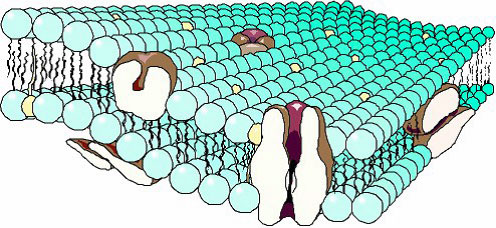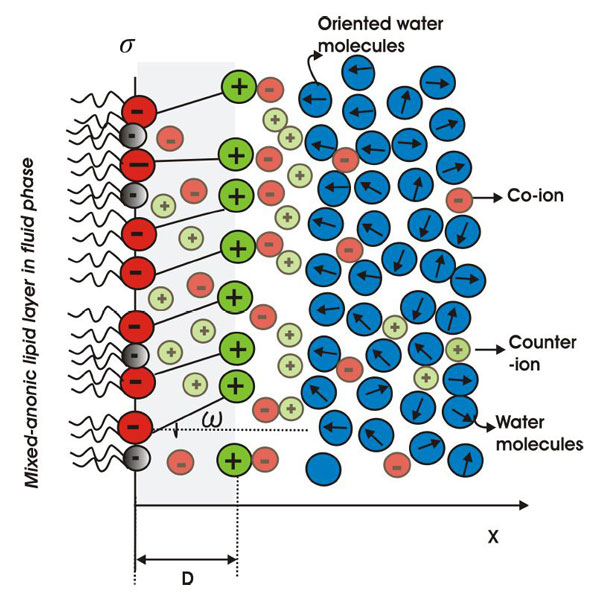Investigation of Electro-mechanical Coupling in Neuronal Membrane - Towards an Electro-mechanical Model of Nerve Pulse Propagation
The project is connected to the basic research of neurodegenerative disorders and respective treatments involving implants and electrodes. The results would be more beneficial for a better understanding of neuronal function. With growing number of neurological complications in human population, the usage of electrically stimulating implants is growing. However, the basic phenomena under the nerve pulse transmission are not clearly understood. Besides the Hodgkin-Huxley hypothesis and model [1] about nerve pulse generation and propagation, in 2005 Heimburg and Jackson have proposed a thermodynamics-based hypothesis and model [2]. Therein the lipid phase transition and the associated electro-mechanical changes in the lipid matrix are attributed for the nerve signal transmission. The role of the lipid matrix in the nerve signal generation and propagation cannot be ignored and needs to be investigated both theoretically and experimentally.

There have been a number of experimental findings in the 1960’s that have significantly shown the coupling of electro-mechanical properties of lipid membranes. However, the intrinsic property of lipid-lipid chain transition affects the electro-mechanical properties and can be responsible for nerve pulse generation and propagation. It is indeed important to investigate this multi-parametric dependence both theoretically and experimentally. Therefore, the aim of this project is to investigate the electro-mechanical coupling of lipid membranes through theoretical procedures and to provide an electro-mechanical model for nerve pulse generation and propagation. To this end, electrostatic models for lipid bilayers in physiological conditions, with space-varying permittivity have been developed. Thus the multi-physics model for nerve signal transmission can be used in neurological implant studies like Cochlea and Deep Brain Stimulation models.
There have been a number of experimental findings in the 1960’s that have significantly shown the coupling of electro-mechanical properties of lipid membranes. However, the intrinsic property of lipid-lipid chain transition affects the electro-mechanical properties and can be responsible for nerve pulse generation and propagation. It is indeed important to investigate this multi-parametric dependence both theoretically and experimentally. Therefore, the aim of this project is to investigate the electro-mechanical coupling of lipid membranes through theoretical procedures and to provide an electro-mechanical model for nerve pulse generation and propagation. To this end, electrostatic models for lipid bilayers in physiological conditions, with space-varying permittivity have been developed. Thus the multi-physics model for nerve signal transmission can be used in neurological implant studies like Cochlea and Deep Brain Stimulation models.

[1] A. L. Hodgkin and A. F. Huxley. Currents carried by sodium and potassium ions through the membrane of the giant axon of loligo., J. Physiol. London 116, 449– 472, 1952.
[2] T. Heimburg and A. D. Jackson. On soliton propagation in biomembranes and nerves, Proc. Natl. Acad. Sci. USA 102, 9790–9795, 2005.
Project-related previous publications
R. Appali; S. Petersen; U. van Rienen. A Comparison of Hodgkin-Huxley and Soliton Neural Theories. Advances in Radio Science, Vol. 8 (2010): 75-79.
B. Lautrup, R. Appali, A.D. Jackson, T. Heimburg. The stability of solitons in biomembranes and nerves. The European Physical Journal E: Soft Matter and Biological Physics, Vol. 34 (6) pp. 1-9, 2011.
R. Appali, B. Lautrup, T. Heimburg, U. van Rienen. Soliton Collision in Biomembranes and Nerves- A Stability Study, in B. Michielsen, J. Poirier (Eds.) Scientific Computing in Electrical Engineering (SCEE 2010). Springer, Mathematics in Industry, Vol. 16, (2012): 205–212.
R. Appali, U. van Rienen and T. Heimburg. A comparison of the Hodgkin-Huxley model and the soliton theory for the action potential in nerves, In: Advances in Planar Lipid Bilayers and Liposomes (APLBL), Elsevier, Vol.16 (2012): 275-299.
R. Appali. Modeling the coupling of action potential and electrodes. Dissertation, Universität Rostock, Fakultät für Informatik und Elektrotechnik, 2014.
Responsible project manager:
Dr.-Ing. Revathi Appali
Furthermore involved:
Prof. Dr. rer. nat. habil. Ursula van Rienen
Funded by

ID number AP 259/1-1
